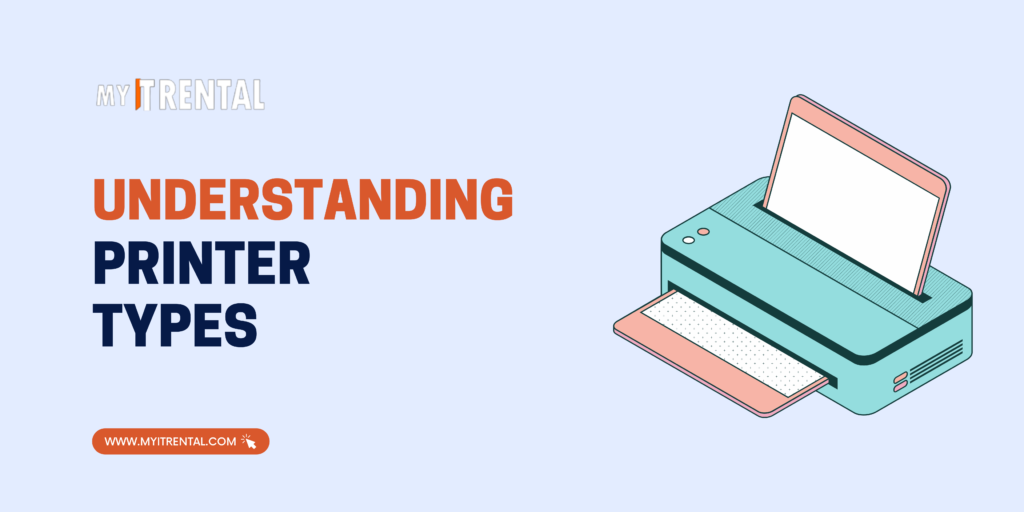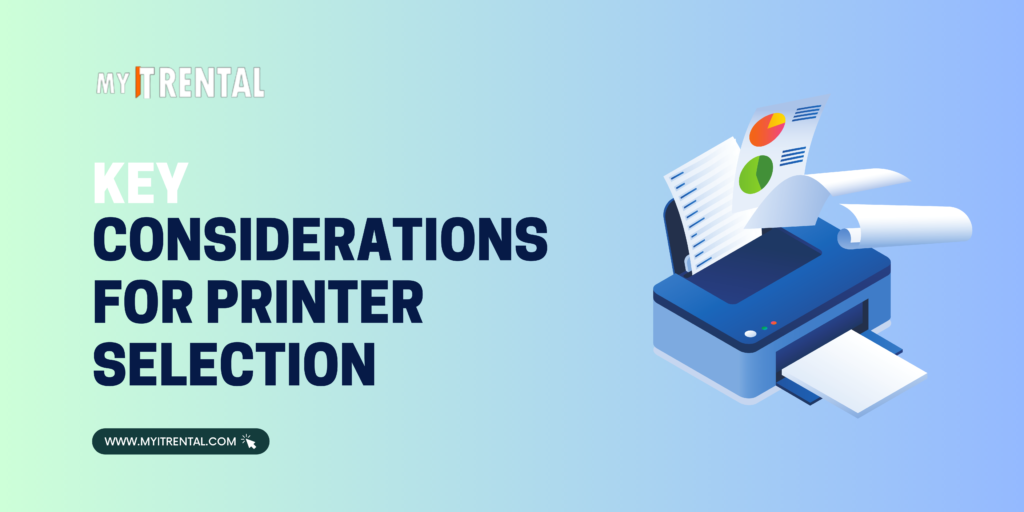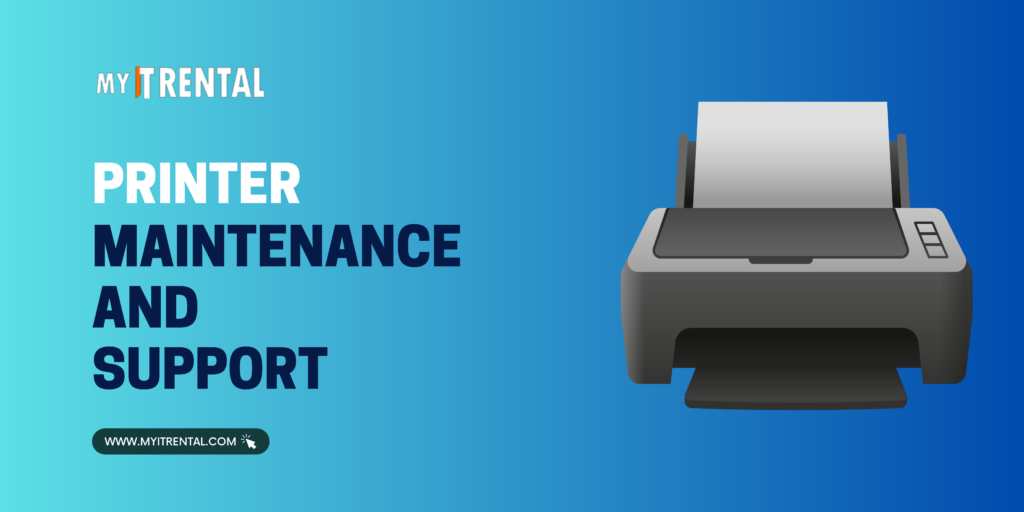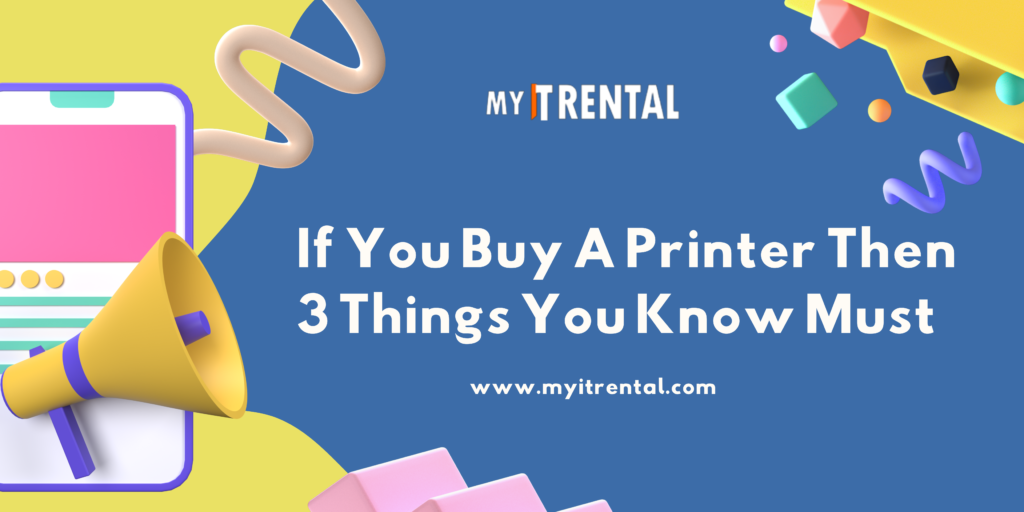Introduction
In today’s digital age, printers play a crucial role in both personal and professional settings. Whether you’re a student, a photographer, or a business owner, finding the right printer can greatly enhance your productivity and creativity. With a plethora of options available in the market, it’s important to make an informed decision before purchasing a printer that meets your specific needs. In this comprehensive guide, we’ll explore various factors to consider when purchasing a printer, ranging from printer types and features to cost considerations and maintenance requirements. Let’s dive in!
I. Understanding Printer Types

When embarking on the journey of buying a printer, it’s essential to understand the different printer types available and their respective capabilities. Here are some of the most common printer types you’ll encounter:
1. Inkjet Printers
- Inkjet printers are versatile and commonly used in home and small office environments.
- They use tiny droplets of ink sprayed onto the paper, resulting in high-quality prints with vibrant colours.
- Ideal for printing documents, photos, and graphics with decent speed and accuracy.
2. Laser Printers
- Laser printers excel in high-volume printing environments, such as large offices or professional settings.
- They utilize a laser beam and toner cartridges to produce sharp and crisp text and images.
- Laser printers are known for their fast printing speeds and cost-effective long-term usage.
3. All-in-One Printers
- All-in-one printers, also known as multifunction printers (MFPs), combine printing, scanning, copying, and sometimes faxing capabilities in a single device.
- These printers offer convenience and space-saving benefits, catering to users with diverse needs.
4. Photo Printers
- Photo printers are specifically designed to produce high-quality photographs.
- They often utilize advanced inkjet technology or dye sublimation to achieve exceptional colour accuracy and detail.
- Photo printers are a preferred choice for photographers and enthusiasts seeking gallery-worthy prints.
5. 3D Printers
- 3D printers have gained popularity for their ability to create three-dimensional objects from digital designs.
- They utilize various materials, including plastics, metals, and resins, to print intricate and customized objects.
- Ideal for professionals in fields such as architecture, engineering, and prototyping.
II. Key Considerations for Printer Selection

Now that we have an understanding of different printer types, let’s delve into key considerations to help you make a well-informed decision:
1. Purpose and Intended Use
- Define your primary purpose for buying a printer: whether it’s for home, office, photography, or specific projects.
- Consider the type of documents or materials you’ll be printing to determine the required features and print quality.
2. Print Speed and Volume
- Assess your printing needs in terms of speed and volume.
- If you require high-speed printing or handle large print volumes regularly, a laser printer may be more suitable.
- For occasional printing or low-volume needs, an inkjet printer can be a cost-effective choice.
3. Print Quality and Resolution
- Evaluate the desired print quality for your specific requirements.
- For documents and graphics, check the printer’s resolution measured in dots per inch (DPI).
- For photo printing, look for printers with higher DPI and specialized photo printing capabilities.
4. Connectivity Options
- Consider the connectivity options that align with your workflow and devices.
- Common connectivity options include USB, Ethernet, Wi-Fi, and Bluetooth.
- Ensure the printer is compatible with your computer, smartphone, or other devices you plan to connect.
5. Paper Handling and Size Compatibility
- Assess the printer’s paper handling features, including input and output tray capacity, automatic document feeder (ADF), and duplex printing capability.
- Check if the printer supports the paper sizes you frequently use, such as letter, legal, A4, or larger formats for specialized needs.
6. Cost Considerations
- Evaluate both the upfront cost and long-term expenses associated with the printer.
- Consider factors such as ink or toner cartridge prices, paper costs, and maintenance requirements.
- Research and compare the cost per page for different printer models to gauge long-term affordability.
7. User-Friendly Features
- Look for user-friendly features like touchscreen displays, intuitive interfaces, and easy-to-navigate menus.
- Some printers offer additional features like memory card slots, wireless printing, and mobile app integration for enhanced convenience.
8. Customer Reviews and Reputation
- Before finalizing your purchase, research customer reviews and ratings for the printer model and brand.
- Consider the reputation of the manufacturer, their customer support, and the availability of software updates and driver compatibility.
III. Printer Maintenance and Support

Once you’ve purchased a printer, proper maintenance and support are crucial for optimal performance and longevity. Here are some essential tips to keep in mind:
- Follow the manufacturer’s guidelines for cleaning and maintenance, including regular printhead cleaning and paper dust removal.
- Keep your printer’s firmware and drivers up to date to ensure compatibility with the latest software and devices.
- Use high-quality ink or toner cartridges recommended by the manufacturer to maintain print quality and prevent potential damage.
- Consider investing in a warranty or extended support plan to safeguard against unexpected repairs or malfunctions.
- Keep spare ink or toner cartridges on hand to avoid downtime when replacements are needed.
Conclusion
Purchasing a printer can be a significant investment, and selecting the right one can significantly impact your printing experience. By understanding the different printer types, considering key factors, and evaluating your specific needs, you can make an informed decision that aligns with your requirements and budget. Remember to weigh the trade-offs between features, cost, and long-term usability to find the perfect printer that meets your expectations. Happy printing!

